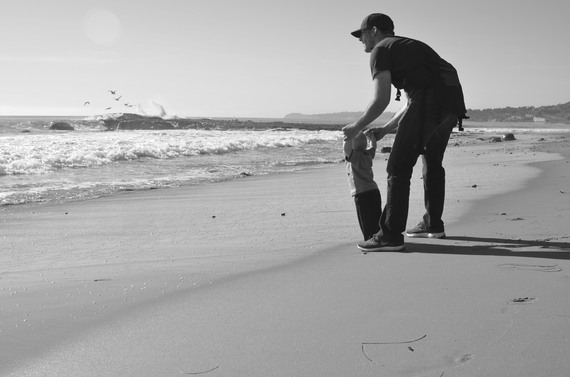I love pushing myself to the limits and embarking on new, exciting adventures. Last year, I reached the summit of Alpamayo (an exceptionally steep peak in the Cordillera Blanca mountain range of the Peruvian Andes), and this year I'm looking forward to uncovering my next great adventure (which is an alpine climb up Forbidden Peak's West Ridge in August).
I also love staying in one piece and coming home to my incredible family. It's all about achieving balance and carefully managing the risks I take.
Whether you're starting your career or are the owner of an established company, your number one priority should be learning how to identify and manage risks. The same holds true if you're planning an adventure or considering a major purchase. Mastering this skill in life and business will enable you to make informed, strategic decisions.
It comes down to this: The key to living a good life is to take calculated risks.
I'm a fifth generation insurance professional, so risk management has always been engrained in my day-to-day life. That doesn't mean, however, that I abstain from risk--I just know how to manage it well.
From flying planes (or jumping out of them) to climbing mountains, my thirst for adventure is often insatiable. Nevertheless, the enjoyment I derive from my career, family and hobbies would not be possible without careful planning and clear judgment.
Unless you choose to live in a bubble, there is no way to entirely eliminate risk from your life. You can, however, adhere to a few best practices to help avoid or reduce your risks.
3 Steps to Manage Your Risks
Risk management strategies are designed to avoid, accept, minimize, transfer and retain risk exposures. These strategies should be customized to fit your lifestyle and liabilities, and should therefore evolve as your exposures and opportunities change.
There are three main steps you can take to accurately--and comprehensively--manage your risks in your personal life and in business.
First, you must assess the situation at hand. Uncover potential risks by evaluating your location, the context of circumstance and any historical data. This information helps uncover potential risks, and also helps you weigh the probabilities and consequences of the risk.
Next, you need to develop a plan of action. Consider the key objectives you're hoping to accomplish, along with the level of risk you're willing to accept. Consider the likelihood of an undesired outcome and what it would cost you, your business or your family if it transpired. Is the risk worth taking? If so, go for it! If not, reconsider your options.
Finally, implement your risk management plan. Live a rewarding, exciting life that is full of adventure. Just remember that adjustments may need to be considered, so plan ahead for any necessary modifications.
Live a Fulfilled Life
*Image Above: (From left to right) Elias De Andres Martos, Parker Beauchamp and
Tony Adams after the summit of Alpamayo.
Tolerance for risk is self-defined and varies by individual. Some may consider an endeavor risky, while others may balk at its dullness--it's all in the eye of the beholder (or risk taker). An educated, calculated risk management strategy improves your chances of safety and success.
The concept of risk management can seem superfluous, but that couldn't be further from the truth. Remember: The key to living a good life is to take risks while using holistic and calculated control. Before taking a risk, you must measure the probabilities and consequences for each action. Then, go ahead and dive in!
For additional tips on risk management, check out my blog on INGUARD.com.
